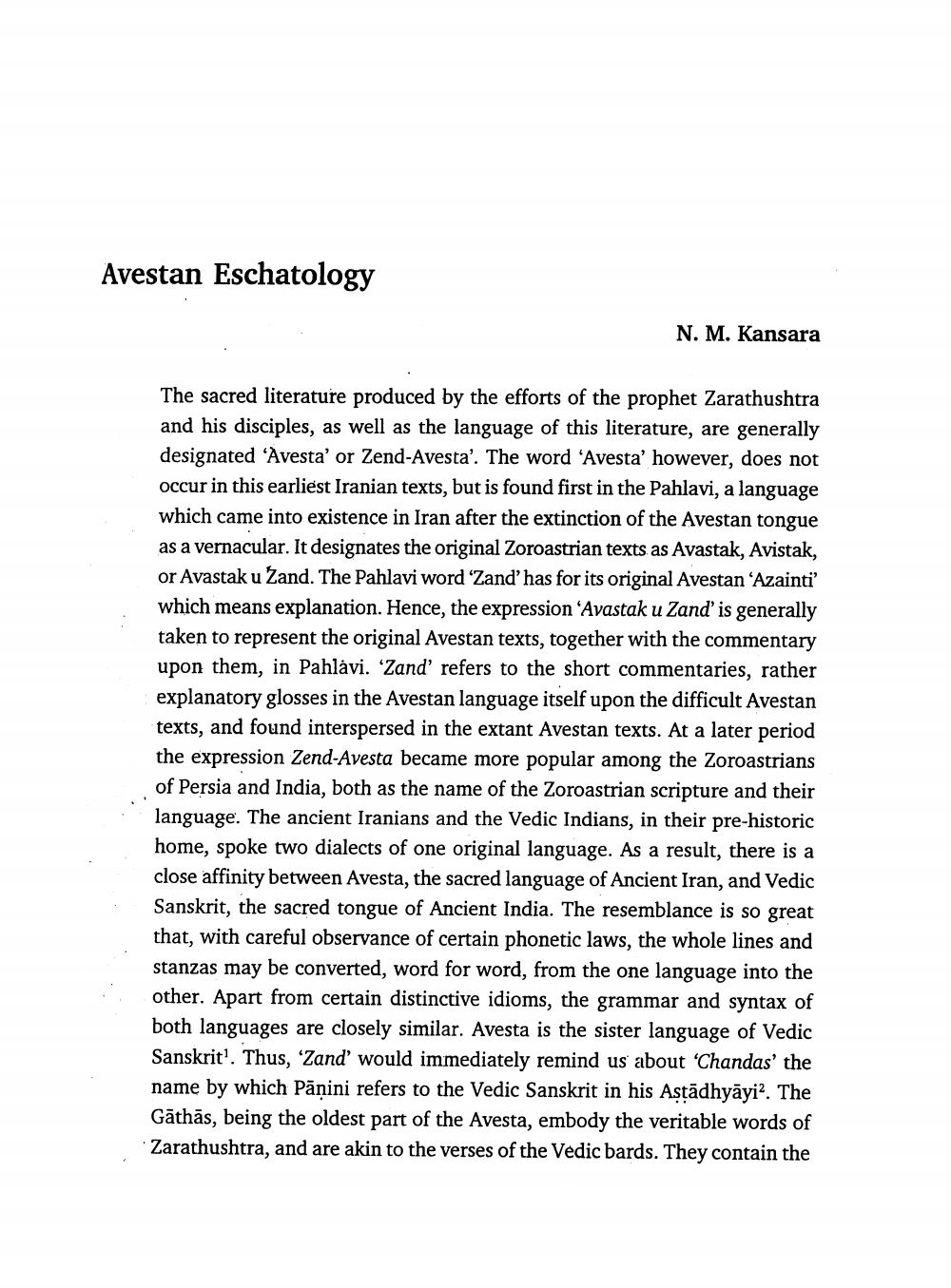________________
Avestan Eschatology
N. M. Kansara
The sacred literature produced by the efforts of the prophet Zarathushtra and his disciples, as well as the language of this literature, are generally designated 'Avesta' or Zend-Avesta'. The word 'Avesta' however, does not occur in this earliest Iranian texts, but is found first in the Pahlavi, a language which came into existence in Iran after the extinction of the Avestan tongue as a vernacular. It designates the original Zoroastrian texts as Avastak, Avistak, or Avastak u Zand. The Pahlavi word "Zand' has for its original Avestan ‘Azainti' which means explanation. Hence, the expression 'Avastak u Zand' is generally taken to represent the original Avestan texts, together with the commentary upon them, in Pahlávi. "Zand' refers to the short commentaries, rather explanatory glosses in the Avestan language itself upon the difficult Avestan texts, and found interspersed in the extant Avestan texts. At a later period the expression Zend-Avesta became more popular among the Zoroastrians of Persia and India, both as the name of the Zoroastrian scripture and their language. The ancient Iranians and the Vedic Indians, in their pre-historic home, spoke two dialects of one original language. As a result, there is a close affinity between Avesta, the sacred language of Ancient Iran, and Vedic Sanskrit, the sacred tongue of Ancient India. The resemblance is so great that, with careful observance of certain phonetic laws, the whole lines and stanzas may be converted, word for word, from the one language into the other. Apart from certain distinctive idioms, the grammar and syntax of both languages are closely similar. Avesta is the sister language of Vedic Sanskrit?. Thus, 'Zand' would immediately remind us about 'Chandas' the name by which Pānini refers to the Vedic Sanskrit in his Astādhyāyi?. The Gāthās, being the oldest part of the Avesta, embody the veritable words of Zarathushtra, and are akin to the verses of the Vedic bards. They contain the




